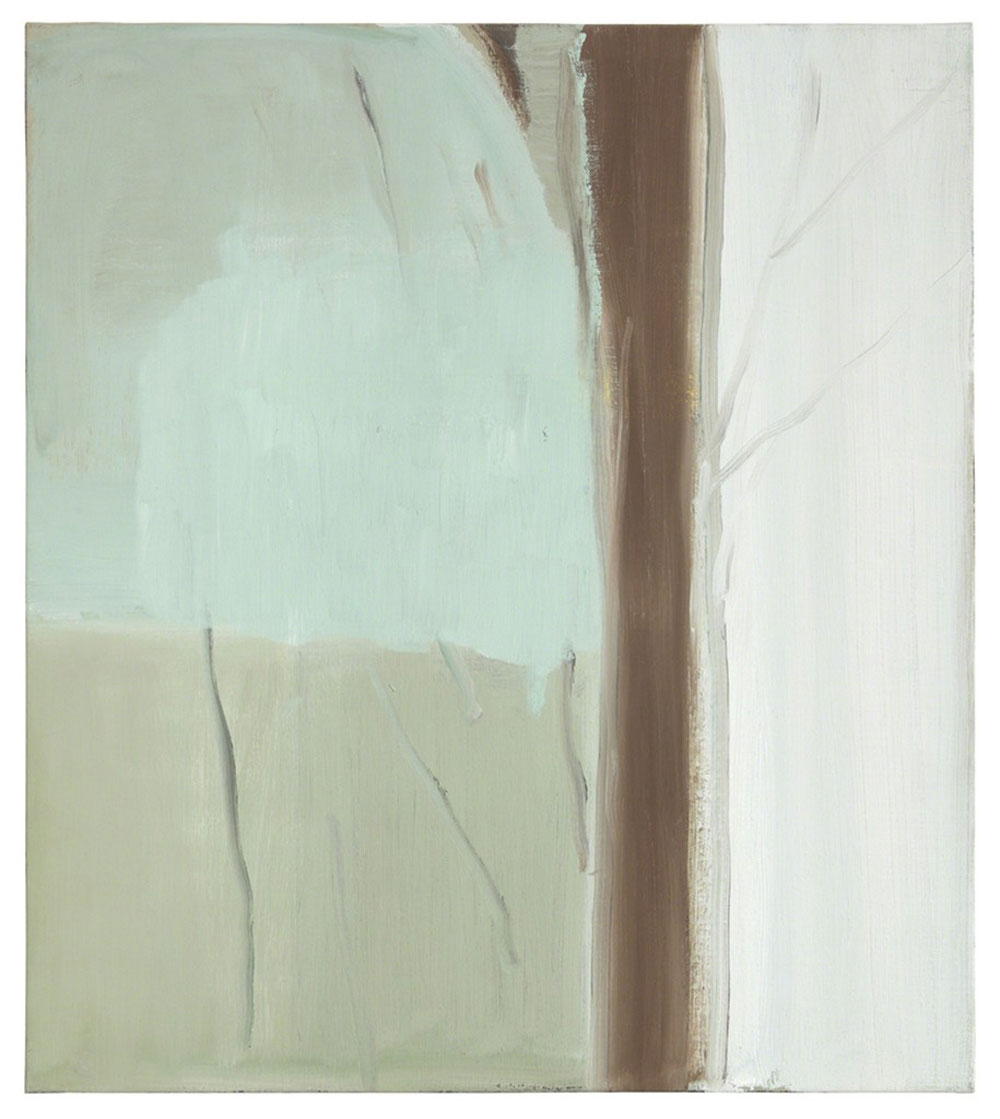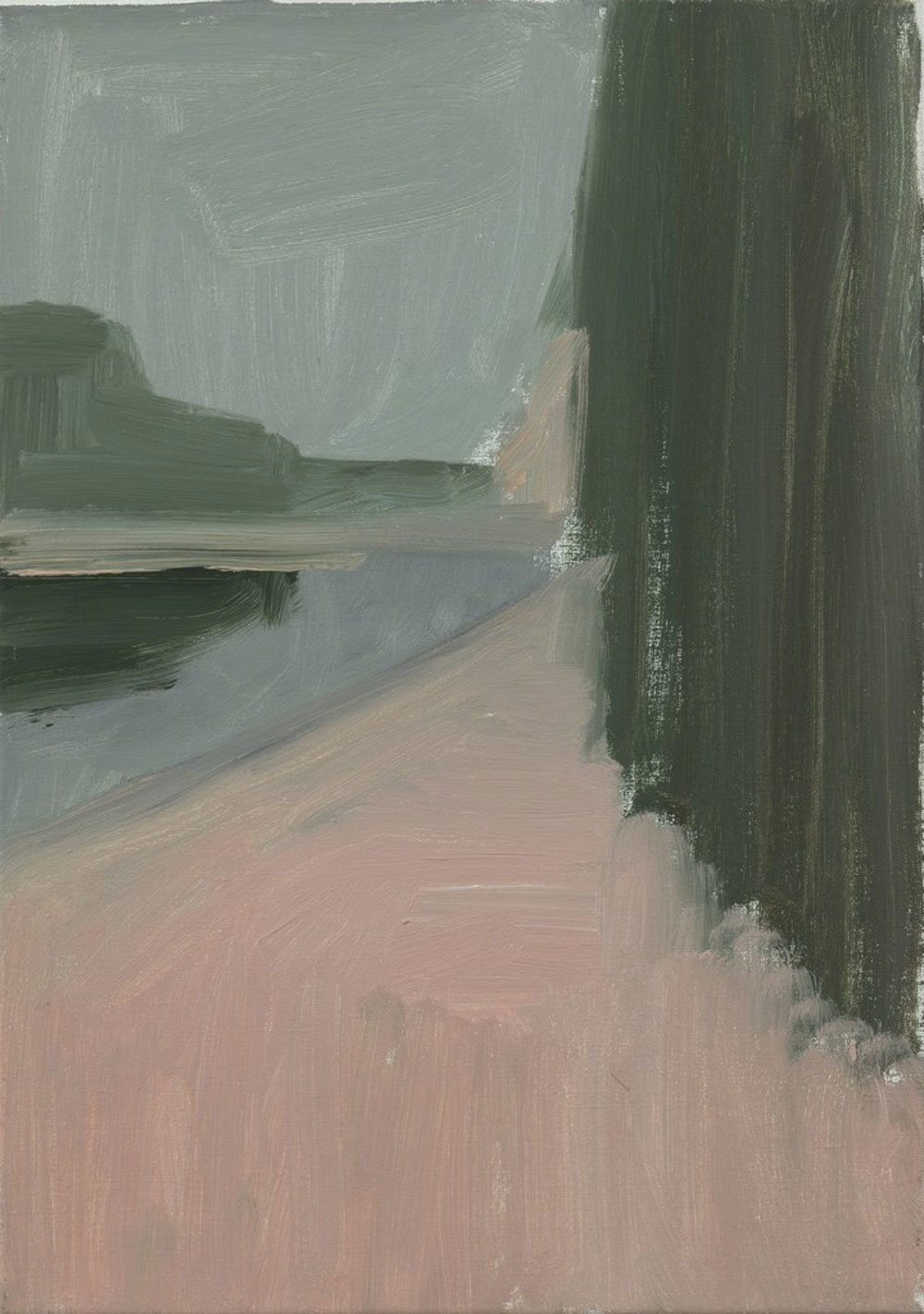Ilse d’Hollander | Victoria Miro
Ilse d’Hollander worked in Flanders, and had just one gallery show, in a local café, before her death in 1997. She painted alone, in a studio in the countryside. And now, she has a UK solo show, on at Victoria Miro right now.
You could call all of the paintings on show “landscapes” of one kind or another. Houses, trees, grass and sky are mainly legible, though sometimes unusually cropped and zoomed in - and therefore abstracted. Sometimes, the zooming and cropping is extreme enough for the viewer to lose themselves in the play of colour and form. She strikes a balance between abstraction and representation that shifts from painting to painting.

This work, Mist, from 1996, is a detail. Maybe a doorframe, maybe a tree, definitely a darker line bisects the work. What are the sinuous black lines breaking the surface of the green and white sections, and is that a figure we see on the left? Or branches and twigs on the right?
Another work, untitled like most of the others in the show, gives us a slightly broader view.
Yet we’re not entirely sure what we are looking at. The bend of a river, a sandy shore, a hill, a peaty grey sky, a mossy wall, a forest? Taking a breath, and a step back, we realise just how big a punch d’Hollander has packed with so few, carefully chosen, brushstrokes. It’s a feeling I had again and again as I walked around the gallery.

d’Hollander loved shadings of blues, powdery greens and pinks. There’s a calmness and certainty about her skies and paths, forest and water.
Could we see in her work the landscapes of the Golden Age, the monolithic blocks of de Stijl, or, earlier, the lush green hills of the Flemish Primitives? She was definitely inspired by the countryside that surrounded her studio.
I hadn’t heard of this painter before I saw the show. I saw from the notes that she died at 29. I only found out later that d’Hollander took her own life. It made me re-think those landscapes - as I gave into temptation and began to read something sinister into her apparently placid rural scenes. In my mind’s eye, they became edgy, uncanny.
Then I put away those thoughts as inappropriate. It seemed inappropriate to seek out crude biographical explanations from these gorgeous, mysterious paintings.
And I should be careful about the act of interpretation. As d’Hollander said: “Fundamental remains the act of painting itself with consideration of the person who is painting. Fundamental remains the onlooker, who lays his eyes on my paintings.”
Her intentions as painter should be added to my interpretations as a viewer, in other words. What a generous thing to say! I miss her even more now.
Other Highlights
I checked out Dara Birnbaum’s video installations from the 90s at Marian Goodman, and a bunch of different things - from digital mashup reproductions of Monet’s waterlilies to a street photography series on stressed male commuters - from Michele Abeles at Sadie Coles.
Branko Vlahović is claimed in a small show at Alison Jacques to be a pioneer of Minimalism from behind the Iron Curtain, and I really enjoyed his commietastic plaster sculptures and monochrome marker pen drawings, all based around the grid pattern. Just down the road in Piccadilly Circus tube station, Rosie Marks has taken over the vitrine at Soft Opening with some life-size photos of holidaymakers in Magaluf. (I loved her funny show notes of how she set the photos up, too.)
Pilar Corrias is showing some intense paintings of fires and flowers from Sabine Moritz. Things cool down at Ordovas, with a typically flashy show of alabaster sculptures from the ancient world, and some big modern names: Kapoor, Chillida and Henry Moore.
Ilse d’Hollander is at Victoria Miro (London). 7 November - 21 December 2018